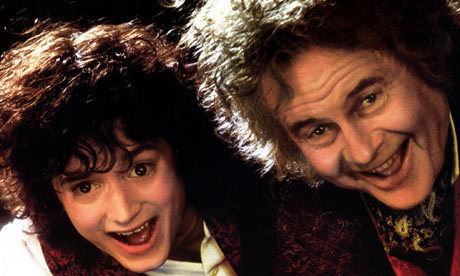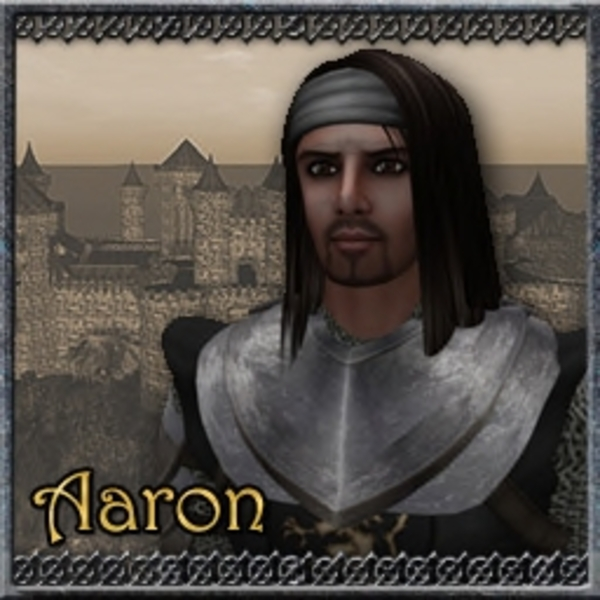Short Answer:
In
Second Life's "Tirion" Sim for JRR Tolkien role playing,
"today" is about 9600 years before the events in "The Lord of the Rings", or
January 19, 12753 BC, fourteen thousand, seven hundred and sixty-six years from the date of this blog, more or
less.
Long Answer:
We are role-playing the first seven chapters of the Silmarillion
here in Tirion Sim. We feature the Noldor Elves in "Age the
Two Trees". A time line of the events relates events recently
passed and coming soon is here:
http://aulethesmith.blogspot.com/2010/10/noldor-in-aman-timeline.html We can call 2013 AD representing 1241 Year of The Trees, since our lovely Anairë and
stalwart Fingolfin wed in 2012, making our most recent key event, since Anairë has no children yet:
1240 Fingolfin weds
Anairë.
To describe "Now"... ((And learn this, ye Guides of
Tirion!))
Humanity is still just a dream
As Elves are in the flower of
their age.
Dwarves and Ents are waking to their fates
But Evils are scattered or in cage.
The Sun and Moon have never yet been.
The world is flat here under
star-filled skies
Gold and silver shining of Two Trees
Give oe'r the
peaceful world, warm twilight lies.
Gandalf, Sauron and Saruman are
Glad, young and idealistic wizards
who
Study under fair but different names.
Galadriel's parents
have yet to woo.
Bilbo and Frodo of far Bag-End
Will live and write beloved stories someday
In perhaps a hundred hundred years
And over a
half a great round world away.
This is where you are in time and space
Welcome, elves, to this
first homely place
FROM LORD OF THE RINGS TO HERE
I wrote "a hundred hundred" when it's actually 9635 years for
poetic licence. It's still doing math with timelines to relate ourselves to the Tolkien stories that almost everyone knows in
http://en.wikipedia.org/wiki/Timeline_of_Arda#3018
All the events in the Lord of the Rings trilogy (four movies
worth), beginning to end, take20 years and 14 days. The first
event in Fellowship of the Ring is a birthday party when Bilbo turns
111 and departs his party in the Shire for Rivendell on Sept 22,
3001. The last event is Samwise returning to the Shire after seeing
the boats depart from Gray Haves to Tirion on October 6 3021. If
you wish to include the Hobbit, you can find the dates and times on
the same timeline:
September 22, 2890 TA, meaning Third Age -
Bilbo Baggins is born.
Note that TA, THIRD AGE, implies a First and Second age, so
here we going backward in time now on the same page,
http://en.wikipedia.org/wiki/Timeline_of_Arda#Third_Age
Several epic event events happened in "Second Age 3441"
that were so significant and defining of the age that the year became
a new "zero":
Elendil and Gil-galad face Sauron in hand to hand combat, but they
themselves perish; Isildur takes the shards of his father's sword
Narsil and cuts the One Ring from Sauron's finger. Sauron's physical
form is destroyed and the Barad-Dûr is razed to the ground. In the
aftermath of the War, many Elves of Gil-galad's following depart to
Valinor: end of the Noldorin realms in Middle-earth.
The cutting of Sauron's ring was a stunning sequence used three
times in the Jackson movies. Note this tiny line: END OF NOLDORIN
REALMS OF MIDDLE EARTH. Most Noldor return to Tirion at that time, both those that had left Aman to help overthrow Sauron and those who had left
Aman earlier in shame who had died or atoned. Only a few Noldor remained in
Middle Earth, notably Galadriel and her clan.
What signaled the change from the FIRST AGE (FA) and beginning of
the SECOND AGE (SA) is again the a defeat of a major baddie and elves
major motions in the world, per
http://en.wikipedia.org/wiki/Timeline_of_Arda#Second_Age
Year FA 590 we find find Morgoth is cast into the Void;
the Elves are summoned to Valinor and settle in Tol Eressëa; a small
part of the Noldor and Sindar remain in Middle Earth Lindon or depart
east and establish realms.
The FIRST AGE is CONFUSING
If you are a human, bad at math or history or both, fall asleep for a
moment because SEVERAL entirely separate times can be called "First
Age" in Tolkien. Besides, humanity is not awake in most of these ages:
~First Ages where time is meaningless
Before the
Ainur
were made.
Before
Eä
(the universe) was made in the Ainulindalë
- Before Arda (the world) was made as the First Vision.
~First Valian Ages, where an Age is tens of thousands of years.
The
Valar
enter and shape Arda.
~The
Years
of the Trees. , where an Age is a thousand years
~ First Age of
Years
of the Sun, where an Age varies by history
The
First
Age. 450 Years of the Trees + 583 Years of the
Sun.
Note that this last "First Age" is the one almost always called "First Age", containing our existence here in Tirion AND the creation of the Silmarils AND the end of the Two Trees AND the first Elven battles AND the Flight of the Noldor AND
the first rising of the Sun and Moon AND the Awakening of Humanity AND a major change in the way time is reckoned. More on that last in a moment.
Finally, non-First Ages in any Tolkien Reckoning:
-
-
- The Fourth
Age. Not specified, but likely another 3000 years.
Here are references for that information:
http://en.wikipedia.org/wiki/Ages_of_Middle-earth
http://en.wikipedia.org/wiki/Timeline_of_Arda#First_Age
http://en.wikipedia.org/wiki/Timeline_of_Arda#Years_of_the_Sun_in_the_First_Age
Now, wake up, humans! It gets easier.
SUN RISE!
Aulë thinks of the sun rising as a major event in time. From the
first rising of the sun and the first Awakening of Humanity, it's 583 sun years to the Second
Age, 3441 more years to the Third age, and another 3001 to LOTR,
making it 7025 years of sunrises til the sun rises over Bilbo's
Birthday party.
Now, backwards to now before the sun or moon ever rose, Quoting
http://en.wikipedia.org/wiki/Valian_Years#Valian_Years
In the 1930s and 40s Tolkien used a figure which fluctuated
slightly around ten before settling on 9.582 solar years in each
Valian year. However, in the 1950s Tolkien decided to use a much
greater value of 144 solar years per Valian year, and included this
figure in The Lord of the Rings appendices as the length of the elven
year (the yen). Tolkien described time as having flowed more
slowly in Aman, such that a Valian year there would 'feel' like the
passage of a single solar year in Middle-earth despite being much
longer.
Since a year in these ages before the sun rose was somewhere between nine and one-hundred-and-forty-four sun-years
long, we can't compute our time precisely, but I like to use (as
Anairë suggests)
ONE Tree Year is TEN Sun years.
So, now it's 1241, Trees Time. Sun rise happened in 1500 in
Trees Time. 1500 less 1241 makes 259 Tree Years before the Sun rises.
259 times 10 is 2590. We'll ignore the plus or minus 9 sun years margin of error for now. Add to 2590 the ages first and second, 583 and 3441, and
3021 TA more till Sam's home, and it' 9635 or about 9600 sun years from "Now" thru the Lord of The Rings.
FROM "NOW" TO NOW
In an exceptionally thoughtful page
http://3rings.webs.com/chronology, the author Ash Branch quotes JRR Tolkien writing around 1955:
“... I hope the, evidently long but undefined, gap(*)
in time between the Fall of Barad-dûr and our Days is sufficient for
'literary credibility’, even for readers acquainted with what is
known or surmised of 'pre-history’.
“I imagine the gap to be about 6000 years: that is we
are now at the end of the Fifth Age, if the Ages were of about the
same length as S.A. and T.A. But they have, I think, quickened; and I
imagine we are actually at the end of the Sixth Age, or in the
Seventh.”
and the following quote from "The History of the Lord of the
Rings"
“The moons and suns are worked out according to what
they were in this part of the world in 1942 actually... I mean I'm
not a good enough mathematician or astronomer to work out where they
might have been 7,000 or 8,000 years ago, but as long as they
correspond to some real configuration I thought that was good
enough.”
Then follows Ash Branch's mathematics, astronomy, calendar making, and
reasoning, resulting in dates for the Ages of Middle-Earth, and (thank you for permission to quote,
Ash):
"the
first uprising of the sun occurred on 25 March, 10,160 BC"
Going backwards from that first sun-rise, recall our 2590 years, give or take
9 years. Add 10,160 and 2,590 to get 12750 BC. Since today is
Jan 19, 2013, take today's date and the "3" from
the current year as our error factor because we can't compute any closer. So, now in Tirion RP sim, "now" is
January 19, 12753 BC. That is 14,766 years ago.
At 11:20 PM. Good night.














